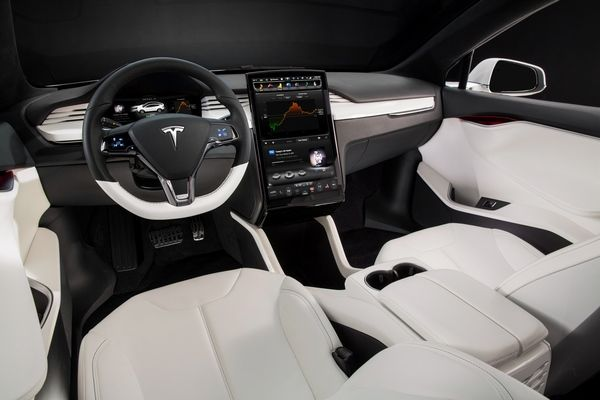In 2023, the global electric vehicle (EV) market surged past 10 million units, marking a significant milestone in the journey toward sustainable urban mobility. As we stand on the cusp of a transportation revolution, artificial intelligence (AI) is playing a pivotal role in shaping the future of smart urban mobility, making electric vehicles not only more efficient but also smarter. In this article, you’ll discover how AI-driven EVs are revolutionizing urban transport and what this means for the future of our cities.
The Role of AI in Enhancing EV Performance
AI-Powered Autonomous Driving
AI is at the forefront of transforming electric vehicles into autonomous driving machines. Companies like Tesla and Waymo are leading the charge with AI algorithms that enable vehicles to navigate complex urban environments. These systems use a combination of sensors, cameras, and radar to interpret surroundings in real-time, allowing for safer and more efficient driving. A recent report from Bloomberg Green highlights that autonomous EVs could reduce urban traffic accidents by up to 90%.
- Advanced Driver-Assistance Systems (ADAS): These systems, powered by AI, offer features like adaptive cruise control, lane-keeping assist, and automatic emergency braking, making driving safer and more enjoyable.
- Machine Learning Algorithms: Such algorithms continuously learn from data collected by the vehicle, improving navigation systems and enhancing the overall driving experience.
Intelligent Energy Management
Efficient energy management is crucial for extending the range and lifespan of EVs. AI helps optimize battery usage through predictive analytics and smart energy routing. According to the International Energy Agency (IEA), AI-driven energy management systems can extend battery life by up to 30% by optimizing charging cycles.
- Predictive Maintenance: AI algorithms predict potential component failures, reducing downtime and maintenance costs.
- Smart Charging: AI systems can optimize charging times and locations based on grid demand and electricity prices, which is a step toward more sustainable energy consumption.
The Impact of AI on Urban Infrastructure
Smart Charging Networks
The integration of AI into urban infrastructure is creating smarter charging networks that cater to the growing number of electric vehicles.
- Dynamic Pricing Models: AI-driven dynamic pricing encourages off-peak charging, balancing grid loads and reducing costs for consumers.
- Real-Time Availability Updates: Apps like ChargePoint and PlugShare use AI to provide real-time updates on charging station availability, reducing wait times and improving user satisfaction.
Traffic Management and Urban Planning
AI is revolutionizing traffic management, helping cities to plan better and reduce congestion.
- Traffic Flow Optimization: AI analyzes traffic patterns to optimize signal timings, reducing congestion and improving commute times.
- Urban Planning: AI helps city planners make data-driven decisions on infrastructure development, ensuring that EV-friendly policies are implemented effectively.
The Future of AI-Driven EVs: Trends and Predictions
Enhanced Connectivity and IoT Integration
The future of AI-driven EVs is intertwined with the Internet of Things (IoT). By 2030, it’s expected that over 95% of new vehicles will be connected, offering seamless integration with smart city infrastructure.
- Vehicle-to-Grid (V2G) Technology: AI will facilitate V2G technology, allowing EVs to supply power back to the grid during peak demand.
- Seamless Connectivity: Enhanced connectivity will enable features like remote diagnostics, over-the-air updates, and personalized user experiences.
Personalized Mobility Solutions
AI is set to offer personalized mobility solutions, catering to individual preferences and needs.
- Ridesharing and Carpooling: AI algorithms can optimize routes and schedules for ridesharing services, reducing travel time and costs.
- User Experience Customization: From climate control to entertainment, AI will tailor the in-car experience to individual preferences, enhancing user satisfaction.
Practical Tips for Embracing AI-Driven EVs
How to Charge Your AI-Enabled EV
- Plan Your Charging: Use AI-powered apps to find the nearest charging stations with real-time availability.
- Optimize Charging Times: Charge during off-peak hours to benefit from lower electricity rates and reduce grid strain.
- Utilize Smart Charging: Invest in a smart home charging station that integrates with your EV’s AI system for optimal energy management.
Where to Buy AI-Driven EVs
- Online Platforms: Explore EV options on platforms like Electrek and InsideEVs for the latest reviews and buying guides.
- Dealerships: Visit local dealerships for personalized recommendations and test drives of AI-integrated models like the Tesla Model 3, Rivian R1T, and Hyundai Ioniq 5.
What to Compare When Choosing an AI-Driven EV
- Autonomy Level: Consider the level of autonomous driving features offered by the vehicle.
- Battery Life and Range: Evaluate battery specifications and range capabilities to ensure they meet your needs.
- Connectivity Features: Look for enhanced connectivity options such as V2G technology and IoT integration.
Conclusion: Steering Toward a Smarter Future
AI-driven EVs are not just a technological advancement; they are a transformative force in shaping the future of urban mobility. As cities become smarter and more connected, the integration of AI in electric vehicles will drive efficiency, safety, and sustainability. The journey toward a smarter urban future is well underway, and AI-driven EVs are at the helm. Are you ready to embrace the change? Share your thoughts and join the conversation on how AI and EVs will continue to redefine our urban landscapes.
As we accelerate toward a future dominated by AI-driven electric vehicles, the potential for innovation and improvement in urban mobility is boundless. Keep an eye on this space as new developments unfold, promising a smarter, cleaner, and more efficient transportation ecosystem for all.

